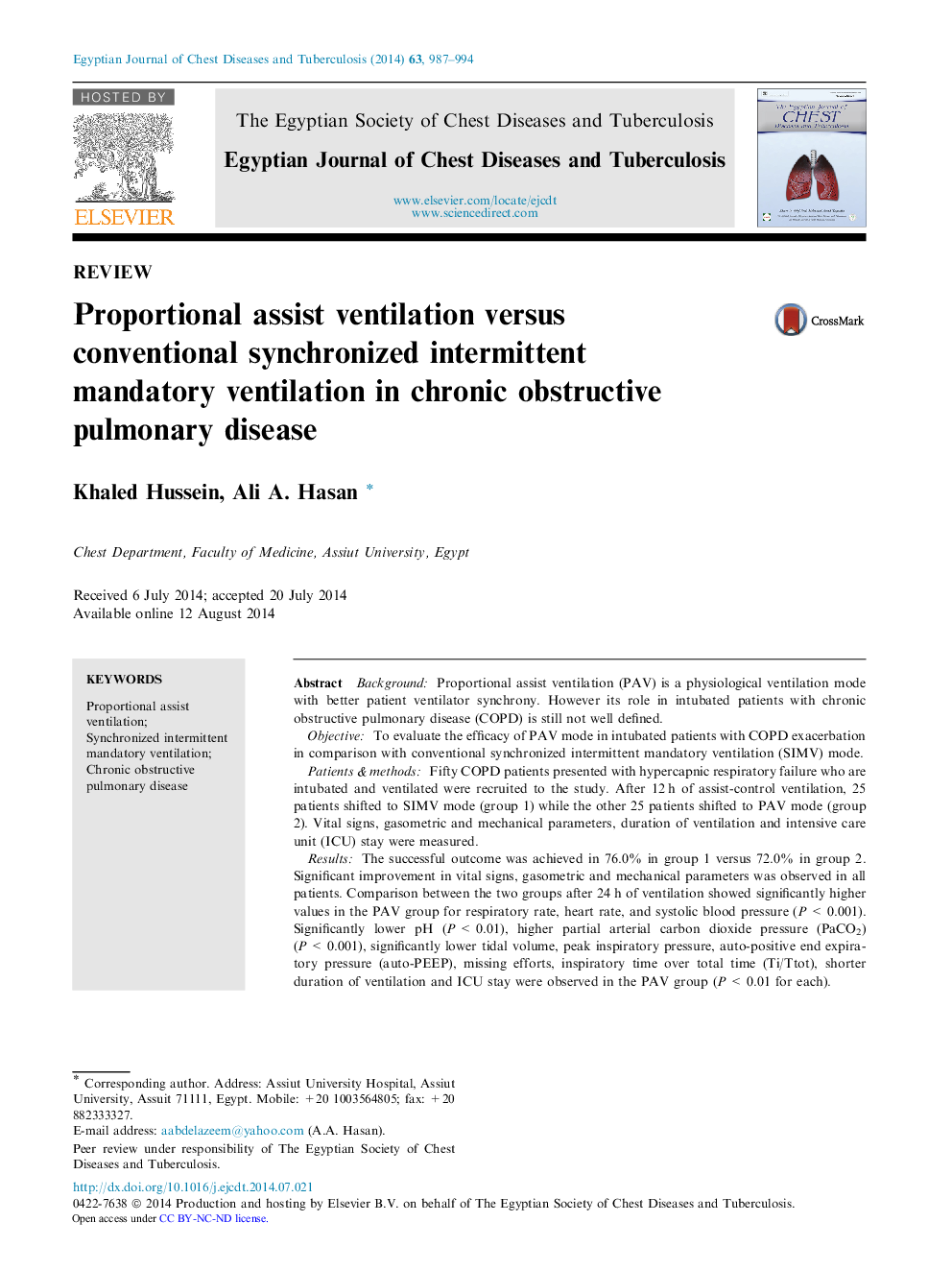| Article ID | Journal | Published Year | Pages | File Type |
|---|---|---|---|---|
| 3400239 | Egyptian Journal of Chest Diseases and Tuberculosis | 2014 | 8 Pages |
BackgroundProportional assist ventilation (PAV) is a physiological ventilation mode with better patient ventilator synchrony. However its role in intubated patients with chronic obstructive pulmonary disease (COPD) is still not well defined.ObjectiveTo evaluate the efficacy of PAV mode in intubated patients with COPD exacerbation in comparison with conventional synchronized intermittent mandatory ventilation (SIMV) mode.Patients & methodsFifty COPD patients presented with hypercapnic respiratory failure who are intubated and ventilated were recruited to the study. After 12 h of assist-control ventilation, 25 patients shifted to SIMV mode (group 1) while the other 25 patients shifted to PAV mode (group 2). Vital signs, gasometric and mechanical parameters, duration of ventilation and intensive care unit (ICU) stay were measured.ResultsThe successful outcome was achieved in 76.0% in group 1 versus 72.0% in group 2. Significant improvement in vital signs, gasometric and mechanical parameters was observed in all patients. Comparison between the two groups after 24 h of ventilation showed significantly higher values in the PAV group for respiratory rate, heart rate, and systolic blood pressure (P < 0.001). Significantly lower pH (P < 0.01), higher partial arterial carbon dioxide pressure (PaCO2) (P < 0.001), significantly lower tidal volume, peak inspiratory pressure, auto-positive end expiratory pressure (auto-PEEP), missing efforts, inspiratory time over total time (Ti/Ttot), shorter duration of ventilation and ICU stay were observed in the PAV group (P < 0.01 for each).ConclusionPAV can maintain improvement of clinical, gasometric and ventilator parameters in intubated COPD patients with the advantages of shorter duration of ventilation and hospitalization compared with SIMV.
